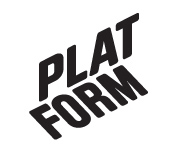
One hundred things that are certainly not art was a project proposed by Cesare Pietroiusti and realized together with a group of artists; Eija Leinonen, Tuomo Väänänen, Serafima Borotinskij, Ulrika Ferm, Mia Damberg, Fia Antus, Albert Braun, Maria Nordbäck, Hannah Kaihovirta-Rosvik and Peter Rosvik. These artists asked 100 persons in Vaasa to show them something that is certainly not art and then to lend it for the exhibition. A certain number of objects and descriptions or documentation where therefore collected and exhibited and later a catalogue was published with all the 100 things.
Invited to exhibit at Platform, the Italian artist Cesare Pietroiusti, sent a list of seventy-five proposals (his so called Non functional thoughts) among which the group of Vaasa artists could choose one to be realized for this occasion. In order to promote, within the local community, a discussion on the limits, and on the possible meaning of contemporary art, these artists decided to make an investigation on what is believed to be “certainly not art”. By exhibiting these “certainly not art” objects in an art gallery an interesting paradox arises. The different levels of authorship represent another important aspect of this project. The authorship, in fact, ranges from the initial proposal of one artist, through the active cooperation of a group of artists, to the final decisions and choices of one hundred people.
With Cesare Pietroiusti´s words, a Non functional thought can be “a way of observing fragments of reality, of creating connections among events, people, places, perceptions, or beliefs… an idea that is not directly determined by carrying out an activity, and therefore appears without a reason”. His practice is “an attempt to better articulate these thoughts by building a communicative context in which they can be recognized by others as part of a shared patrimony.”Hopefully such recognition can contribute, in a simple way, to offer different ways of thinking, perceiving, and looking at things.
The second room was an video installation picturing some homeless people living in a back yard; drawings of faces on big papers in rolls, standing by themselves on the floor; and the garbage produced during the construction of the exhibition was left on the floor, strengthening the stinking atmosphere of a shabby backyard. racetrack.
Cesare Pietroiusti is based in Rome, Italy.


[The beginning of a text by Ralf Andtbacka, writer, based in Vaasa. The text is a reaction to the concept ‘nonfunctional’ and included alongside the objects in the catalogue]
The plan is as follows: to walk from my home at Skolhusgatan 47 in Vasa to Platform, at Kyrkoesplanaden 19, not by taking any of the ordinary routes, but by relying on an element of chance. My route will be determined by flipping a coin, for instance at street corners. I will flip the coin at points I consider ‘natural’ or interesting. If there are more than two options at any point, I will first make a selection and then use the coin. One of the two choices will always be a route taking me closer to the gallery. If I arrive there I will be delighted, but I will consider my mission fully accomplished even if I end up somewhere else. There is no given purpose either to the process or to the outcome of it. Similarly, there are no given metaphorical or therapeutic implications. The text is open to any interpretation. It is partly inspired by the concept of non-functional thought, which Cesare Pietroiusti describes in the following manner: Each idea that is not directly determined by carrying out an activity, and therefore appears without reason, can be considered non-functional. This impractical idea, even if superfluous, is lived in a non-compulsory and non-neurotic manner. It is an apparition whose appearance cannot be predicted, and whose purpose is not clear. During my walk I will record various facts – i.e. the time, my location, people and things I encounter – but I will also allow myself to react on any impulse, however whimsical. These imaginative acts do not provide a key to the project. Since this is a commissioned text, there is an aspect of necessity involved; but I am also very much aware of the fact that I can choose not to write it or, even better, let the coin make the decision for me, here and now. […]


















